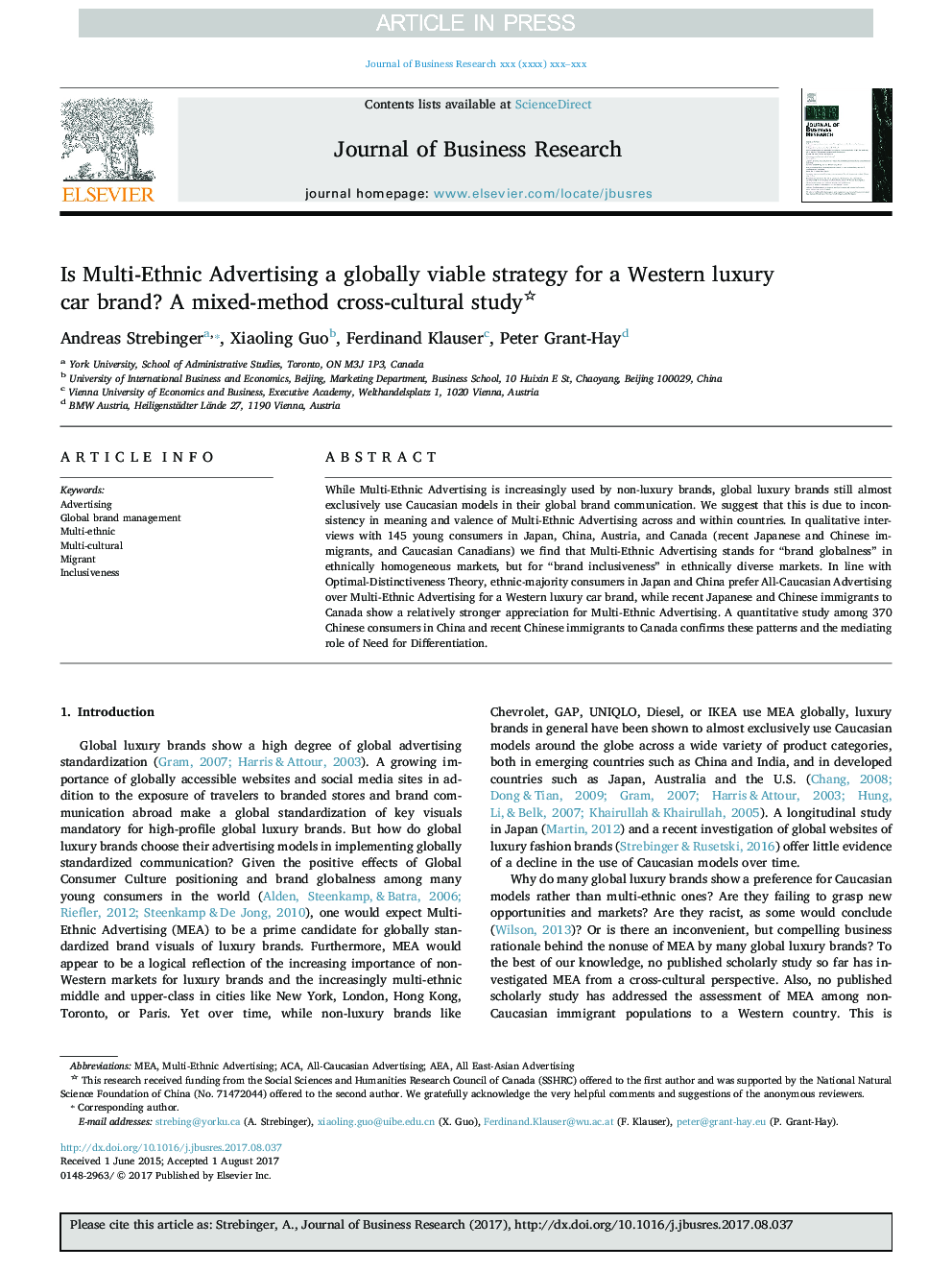| Article ID | Journal | Published Year | Pages | File Type |
|---|---|---|---|---|
| 7425588 | Journal of Business Research | 2018 | 8 Pages |
Abstract
While Multi-Ethnic Advertising is increasingly used by non-luxury brands, global luxury brands still almost exclusively use Caucasian models in their global brand communication. We suggest that this is due to inconsistency in meaning and valence of Multi-Ethnic Advertising across and within countries. In qualitative interviews with 145 young consumers in Japan, China, Austria, and Canada (recent Japanese and Chinese immigrants, and Caucasian Canadians) we find that Multi-Ethnic Advertising stands for “brand globalness” in ethnically homogeneous markets, but for “brand inclusiveness” in ethnically diverse markets. In line with Optimal-Distinctiveness Theory, ethnic-majority consumers in Japan and China prefer All-Caucasian Advertising over Multi-Ethnic Advertising for a Western luxury car brand, while recent Japanese and Chinese immigrants to Canada show a relatively stronger appreciation for Multi-Ethnic Advertising. A quantitative study among 370 Chinese consumers in China and recent Chinese immigrants to Canada confirms these patterns and the mediating role of Need for Differentiation.
Related Topics
Social Sciences and Humanities
Business, Management and Accounting
Business and International Management
Authors
Andreas Strebinger, Xiaoling Guo, Ferdinand Klauser, Peter Grant-Hay,
